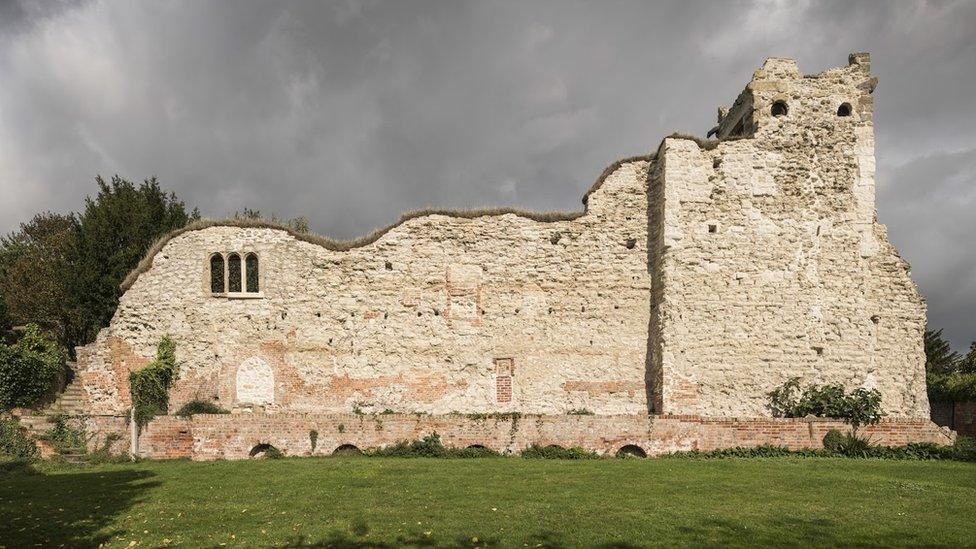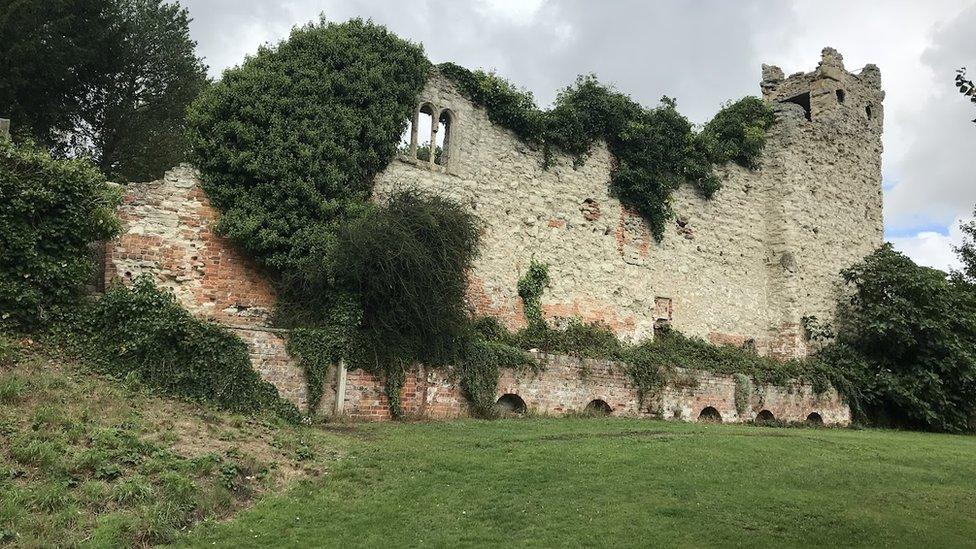Wallingford Castle remains saved from ruin, Historic England says
- Published

Wallingford Castle's remains have been repaired thanks to a grant of almost £300,000
The remains of a medieval castle, built in the wake of the Norman invasion under William the Conqueror, have been saved from ruin.
The site of Wallingford Castle, in Oxfordshire, has been repaired thanks to a grant of almost £300,000 from Historic England.
Across south-east England, 15 sites have been added to public body's Heritage at Risk Register this year and 25 sites saved.
Nationally, 159 sites have been added.

Plants and "massive roots" were removed from the wall during the work
The standing ruins of the College of St Nicholas are the largest surviving walls of the castle, which was built sometime between 1067 and 1071.
The college housed priests who served the chapels in the castle, which was one of three built in the wake of the Norman invasion to establish control over the Thames Valley - the others were at Windsor and Oxford.
Wallingford Castle was later dismantled stone by stone on the orders of Oliver Cromwell.
"Plants and massive roots were removed from the wall which was then stabilised, rebuilt where necessary, and repointed using original material," Historic England said.
The surrounding Castle Gardens are managed by Wallingford Town Council.
Councillor Katharine Keats-Rohan said: "The castle remains bear priceless witness to the important role Wallingford has played in English history and should be a source of pride to us all.
"I am enormously grateful to Historic England for helping us to save them for the future."

Follow BBC South on Facebook, external, X, external, or Instagram, external. Send your story ideas to south.newsonline@bbc.co.uk, external.